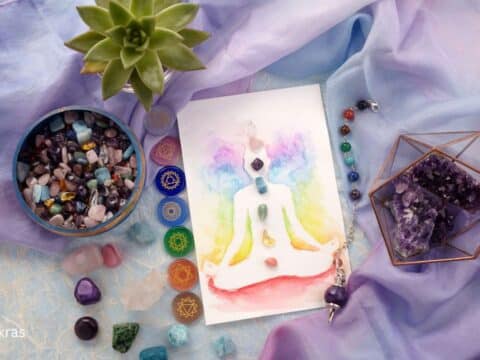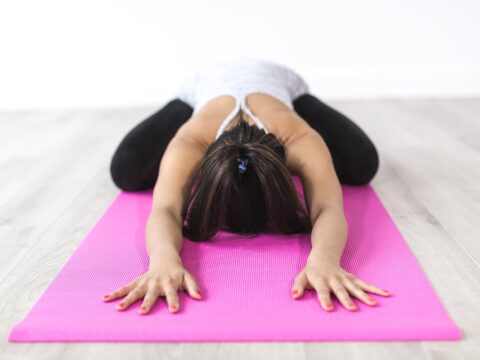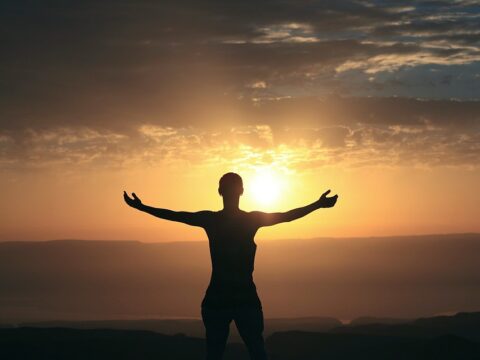If you are a runner, you may be wondering if you should try yoga. While it’s true that yoga has many benefits for runners, there are actually a few specific benefits that yoga can give you that no other form of exercise can.
Yoga is ideal for runners because it improves your flexibility, balance and strength. Yoga increases your range of motion, which makes it easier for you to perform your movements fluidly.
By increasing your flexibility, you also make it easier for yourself to maintain proper running posture and reduce the risk of injury. A University of Michigan study found that flexibility is the best predictor of running injuries.
As mentioned earlier, yoga can help improve balance. You need to practice balancing on your feet to do some of the poses, and this exercise will help you get better at it. Since balance is so important in walking, it is important that you practice and improve it every day.
Podcast
The next benefit of yoga is that it strengthens your core muscles. By strengthening your core, you can avoid injuries that occur when you don’t have the necessary strength in your core. These include injuries such as plantar fasciitis, IT band syndrome, shin splint syndrome and hip pain.
Finally, yoga also improves your stamina. It is a great way to increase your lung capacity and you can run longer without getting tired. By improving your endurance, you can keep running without feeling like you have to give up.
If you’re like most people, you’ve probably heard a lot about the amazing benefits of yoga, but you just haven’t had time to start yet. Well, I’ve put together some information about the benefits of yoga for runners that will hopefully motivate you to do it.
Why incorporate yoga into runner training?
Yoga has been around for a long time and is considered one of the oldest forms of exercise. In fact, yoga was originally developed to relax the body and mind and promote a healthy lifestyle. Today, however, yoga is used as a form of physical exercise and can also be used to improve athletic performance.
Why should you incorporate yoga into your running routine?
Running is a great way to keep your body fit and burn calories. However, if you want to run faster or cover longer distances, you need to make sure you are doing the right things.
Adding yoga to your routine will help you train and focus better when you run. Whether you’re training for a race or just want to improve your overall fitness, yoga can help.
What benefits can you expect when you add yoga to your running routine?
Yoga can help you to:
- Strengthen muscles
- Make running easier
- Increase flexibility
- Improve posture
- Recover from injuries
How can I incorporate yoga into my running routine?
Although it is possible to learn yoga for beginners online, you will probably want to start by attending a class. These classes can be found at a number of gyms and usually include a range of exercises.
They are a great way to learn simple stretches and you can even learn some basic poses. When you choose a class, make sure you are comfortable with the instructor.
If you are uncomfortable, you will probably not want to continue with the class. If you decide to attend a class, make sure you write down the poses you do. You may also want to buy a yoga mat. This is a necessity as you will need one to practice on.
Yoga poses for runners
Downward looking dog
Downward looking dog, also known as Adho Mukha Shvanasana, is a popular yoga pose. It is often performed as part of a sequence of yoga poses known as Surya Namaskar. While it was traditionally practised only as a restorative pose, in modern yoga it is used as a workout.
There are a number of ways to modify the pose to suit the individual needs of the runner.
Although this pose seems easy to learn, it is quite challenging in practice. New students may not like this pose at first, but the teacher assures them that it will get easier with practice.
The benefits of downward dog include improving blood flow to the brain and stretching the muscles in the arms, legs and torso. It also opens up the gluteal muscles and hamstrings. If you practice this posture regularly, you will notice a noticeable difference in your posture and overall health.
Downward facing dog not only promotes balance and lengthening of the spine, but is also a great way to strengthen the shoulders.
Yoga Mountain Pose
This pose is suitable before a run to warm up. This pose consists of three basic steps that require a strong core and complete alignment. It is also a challenging exercise that requires a lot of inner work to perform correctly.
The yoga mountain pose is a great way to get a firm core and keep your spine healthy. This pose is a great way to energise your entire body.
Remember to breathe deeply and slowly while doing this. This way you will achieve better alignment and posture. You will feel more relaxed and focus on your breath.
Mountain pose not only strengthens your legs and abdominal muscles, but also relieves back pain. It has even been shown to relieve the symptoms of sciatica and flat feet. It’s the perfect pose to practice at home before you go to a yoga class.
Standing forward bend
Standing forward bend (Uttanasana) is very suitable for runners because it stretches the calves and ischial muscles. The forward bend is a posture that stretches the spine and hamstrings.
It is performed by placing your feet hip-width apart and folding your upper body forward over your legs.
Exhale as you bend forward. Hold your elbow with one hand and extend the other arm forward. Hold this posture for five minutes and feel how it opens your shoulders, chest and back.
To get the most out of your forward bend, you need to be able to move your joints well. If your Achilles tendons or back are tight, it can be difficult to go deeper. In this case, you may have a joint blockage.
To start with, make sure you do not round your middle or lower back.
Forward bends are difficult, but they are also good for your back. When done correctly, they relieve tension in the lower back. Deep forward bends require a strong hip flexor area.
Bridge pose
To perform the yoga bridge pose (Sethubandha) correctly, you need to make sure that your shoulders are relaxed and your pelvis is in line with your spine.
If you find that your shoulders are blocking, try bending your knees further and pushing your head further out through your arms. Alternatively, you can use blocks or pads to stabilise your pelvis and keep your balance in the pose.
Once you feel comfortable in this pose, place your arms beside your body and place your palms on the floor. As you lift your body and arch your back, you will feel the energy flowing through your body. This is a great pose if you want to stretch your back completely.
Bridge Pose is a great pose for people with back and neck problems. It also prevents slouching and strengthens the hips and back. This pose can also relieve the symptoms of back pain, menopause and stress.
Tree pose
The Yoga Tree Pose, also known as Vrikshasana, is a balancing asana. It is one of the few standing poses in medieval hatha yoga and is still commonly practiced in modern yoga. The pose is known for its many benefits, including strengthening the core and improving flexibility for runners.
It is not recommended for people who suffer from vertigo.
One thing to keep in mind when practising the Yoga Tree Pose is that it is a challenging pose that requires balance. It is important to tense the thigh muscles and stretch the back of the knees.
If you have difficulty stabilising your feet, try standing on both feet. This will help you not to fall. Also, keep your feet so that they point straight ahead. When you balance in the pose, you should feel the energy rising through the standing leg.
Another way to modify the pose is to use a chair. This can be helpful for people who have difficulty standing on one foot and leaning on a wall.
First place your right hand on a chair. Then bend your left knee to get into the tree position. Once you have practised this variation, you can repeat it with the other leg. Alternatively, you can practice this pose with your back against a wall.
Yoga plank pose
Plank Pose (Phalakasana) is one of the most popular yoga postures and is a core strengthening exercise that requires a lot of strength. It is not suitable for beginners and is not recommended for pregnant or postnatal women. People with injuries or a weak body should also avoid this pose.
To achieve a good plank, you should start on all fours with your legs straight. The hands should be shoulder-width apart. The hips and shoulders should be directly above the elbows and knees. The eyes should be fixed between the hands. A strong line of energy should form between the knees and hips.
Plank pose not only strengthens the core, but also the muscles of the arms, wrists and back. It also improves the nervous system. Advanced variations of this pose can raise one leg or arm.
The pose is very effective in improving posture and relieving back pain. You should practice this pose regularly to get the best results as a runner.
The main focus of the Yoga Plank Pose is to target the right muscles while keeping the body aligned. The correct use of the entire body is crucial to the effectiveness of the pose.
As with all yoga postures, the centre of the body should be engaged in this pose. The lower abs and quadriceps should be engaged to create a soft, long and wide base.
Lizard pose
The Yoga Lizard Pose (Utthan Pristhasana) is a basic backbend that requires proper alignment and balance. It stretches the front of the thighs, hip flexors and groin. Begin by placing the arm on the same side under the front leg and wrapping the upper arm around the back leg.
You can also use a yoga belt or your hands to help with this pose. As you bend forward, your spine should lengthen. Also make sure that your back leg is activated so that you can stretch forward.
Practice the lizard pose slowly and evenly on both sides. If you feel that your hips are getting too heavy, pause and focus on your breathing. It is important not to overload your body during this pose. You may want to place a yoga block on the floor for better balance and support.
Once you have mastered the basic lizard pose, you can move on to other variations.
There are 16 variations of the lizard pose. Be sure to add the Lizard Pose as a Runner to your yoga pose library so you can plan your sequences.
This pose can also help you with sciatica. It is a deep hip stretch that helps to release tension and improve your balance.
Warrior II
The Yoga Warrior II (Virabhadrasana 2) pose is a challenging pose that requires a lot of strength and stability to hold. Not only is it difficult to perform, but too much pressure on the knees and hips can cause imbalance in the body.
People who are frail, have injuries or are recovering from illness should not practise this pose. An experienced teacher can help you maintain proper balance.
When performing the Yoga Warrior 2 pose, remember to keep a straight spine. You can hold the pose for between 30 seconds and one minute.
Then take a deep breath and turn your feet over. While holding the pose, you can keep your arms extended and focus on the fingers of your left hand.
Start with your right foot facing the front of your mat. Your right knee should be above your right ankle. Make sure your right foot is stable on the mat.




